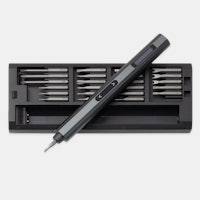Click to view our Accessibility Statement or contact us with accessibility-related questions




Breaking into Eternal Formats - Case Study: GP Louisville - Massdrop East/West Article #4

search
close
Sort by: Newest
keyboard_arrow_down
Let’s get the conversation started!
Be the first to comment.
PRODUCTS YOU MAY LIKE
Trending Posts in More Community Picks

Graham88
Completely surprised by the lack of blade diversity here on Drop...
I’ve been a collector of Blades since before my teens, and a retailer coming up on 15… or maybe 20 years. Drop has really been kind of an interesting experience for me, because I do occasionally get to see some unusual tech and sometimes EDC items that otherwise I might not have been aware of. And maybe it’s because I have a deep love of cutlery and bladed weapons, but I find myself trolling through the site looking at it what’s available; and it’s just it’s pretty much the same. And the bladed community here is just always confused me.. every single knife is about the same, they’re almost all drop points and although the handle materials change and brands change.. it’s really just the same knife over and over and over again... occasionally you’ll see a tanto or a slight variant; but rarely… and almost never a serrated blade. And I’m just deeply amazed at this diversion of serrated blades. And I’m just surprised there isn’t more of a request for diversity here.... and I...
Mar 12, 2020
JellyDPhoto
Can we get Sony E-Mount or other mirrorless camera options please..
Would be nice to see some Sony E mount full frame cameras on here. I currently shoot with a A99 and they killed the lense path for better or more option lenses and now is all E-Mount. 🤔
Jan 13, 2020
RayF
There Are Pandas, and Then There Are Pandas.
And this isn't either of them! The Pandas we're talking about here, are watches, not bears. And what got me thinking about them (again) was a link posted this morning by @cm.rook who pointed a few of us to the very attractive (and not terribly priced) Yema "Rallygraph" Panda which, in it's most traditional arrangement, looks like the one on the left, but can also be had in the version on the right: The model on the left is a true Panda, while the model on the right is called a reverse Panda. The reason for that distinction is clear--Panda bears, only come in the first arrangement. Now at this point, everyone should be thinking about the most well-know Panda, The Rolex Panda, which is actually a Daytona, and among Rolex Daytonas, the most famous of which is the Paul Newman Daytona, which was famous first, because it was Paul's, and second because it sold at auction for $17.8 million (US Dollars). The story of that auction is well-known so I'll only...
Nov 8, 2019






I think a lot of amateur players are faced with similar situations when a Modern or Legacy GP rolls into town. You want to play the event and have a reasonable chance of doing well, but figuring out how to approach an eternal format with a card pool in the tens of thousands can be a daunting task. Grand Prix Louisville was effectively my third sanctioned Legacy tournament, and my first in almost two years. I didn't win the tournament, but I was poised to make a deep run before the wheels fell off as I lost my last three rounds. I made some mistakes due to lack of experience, but I learned a lot and had fun along the way. Overall, I was happy with my preparation and deck choice and think that some of the things I did to prepare would be useful for those looking ahead to upcoming eternal GPs in San Antonio or Las Vegas.
Step 1: Survey the Format
Building a deck from scratch is difficult when you are new to a format, especially one that's had years to mature. Although you're welcome to try, your best chance of doing well in your first Modern or Legacy tournament will be to start with an established archetype. Unlike Standard which can settle into a two or three deck metagame, eternal formats typically have a large number of viable strategies. A quick search on a deck repository website like mtggoldfish.com will yield a list of the most popular archetypes at any given time.
As a rule of thumb, anything making up more than two percent of the metagame of successful decks would be a reasonable choice for an upcoming tournament. Although less represented archetypes can win, there are usually good reasons for their lack of popularity. Until you've explored the format enough to understand these reasons, my advice would be to stick with something more mainstream. Listed below are the fourteen Modern decks and twelve Legacy decks that satisfy this criteria right now.
Modern Decks:
- Affinity 8.18%
- Abzan 5.76%
- Jund 5.20%
- Bant Eldrazi 4.46%
- Death's Shadow 4.28%
- Eldrazi Tron 4.28%
- Burn 4.28%
- Tron 3.90%
- Titan Shift 3.16%
- Valakut Breach 3.16%
- Grixis Control 2.42%
- Ad Nauseam 2.42%
- Wild Nacatl Burn 2.42%
- Grixis Delver 2.23%
Legacy Decks:- Miracles 19.77%
- Storm 7.36%
- Sultai Delver 6.20%
- Grixis Delver 5.81%
- Elves 4.65%
- Death & Taxes 3.88%
- Shardless BUG 3.10%
- Sneak & Show 2.71%
- True-Name BUG 2.71%
- Aluren 2.33%
- Grixis Sneak Attack 2.33%
- Burn 2.33%
Step 2: Identify Your Play StyleUnlike in Standard where a bad deck choice can lead to a string of unfavorable matchups, eternal players will often just play their pet deck regardless of any recent metagame shift. In a fifteen round tournament like a Grand Prix, you'll be wading through some number of good and bad matchups no matter what you do. No deck will be favored against everything, so what's really important is choosing something that fits your play style. Being new to the format, you'll be put in a lot of unfamiliar situations, and it will help if you're able to draw on your experience playing the same type of deck in other formats.
To prepare for Grand Prix Louisville, I knew that I wanted to play an interactive midrange strategy that would allow me to play powerful cards and try to outmaneuver my opponent. In particular, I wanted to avoid playing a slow control deck like Miracles that might lead to draws, an intricate combo deck like Storm, or a linear strategy like Burn that would not allow me to leverage skills I've developed in other formats. Using this criteria, I decided to narrow my focus to the following three decks: Death & Taxes, Shardless BUG, and Aluren. Although Aluren is technically a combo deck, I was willing to consider it since the current iteration is more of a midrange strategy that sacrifices some card quality in order to play an "I win" card that costs four mana.
Step 3: Select a Deck
After narrowing it down to a handful of decks based on your play style, the next step is to play some games with each deck and determine which one to play in the tournament. It doesn't matter if you play online, at FNM, or just proxy some decks to test with friends. All you really want to do is play a bunch of games with each deck against a random array of opposition.
Although it's important to choose the right deck, this is a step that people spend way too much time on, sometimes leaving the decision until the night before. This is especially true for eternal formats where any popular strategy would be a fine choice.
The number of games you play with each deck will be a function of how much time you have, but you really don't need to play that many. For Louisville, I played about eight games with Death & Taxes against a friend and felt like the deck was underpowered and too reliant on drawing the right hate cards for any given matchup. That's not to say that Death & Taxes isn't a good deck or a viable strategy, but it didn't feel like a good choice for me. I was pretty happy with Shardless BUG after a similar set of games. I played a couple leagues on Magic Online and went 3-2 in both. At this stage, it's important to note that actual game results don't matter nearly as much as how the deck feels. I felt like I had agency in most of my games and was learning from my mistakes.
Although I had planned to try out three specific decks, it's important to adjust on the fly when the information you are getting demands it. Over the course of these two leagues, I was often thinking about the Aluren deck which has a lot of similar cards. There were not that many games where it would have been easy to resolve a four mana enchantment, and the rest of the deck just seemed like a worse version of Shardless. Another thing I discovered was that the Shardless vs Sultai Delver matchup wasn't nearly as one-sided as I thought it would be. When I played Temur Delver a few years ago, Shardless was one of the worst matchups due to its abundance of card advantage. I ended up splitting four close matches and felt that Sultai Delver might have a similar matchup profile with better results against combo. I decided to substitute Sultai Delver in for Aluren as my third deck option.
After playing a league with Delver in which I also went 3-2, I decided to lock in on Shardless. The Delver deck was good, but I didn't like how cards like Delver of Secrets were occasionally irrelevant, and felt like Shardless had a higher percentage of competitive games. These conclusions were based off of a very small sample size and could easily prove incorrect, but I knew that my energy would be better spent learning one deck than agonizing over the choice.
Step 4: Practice and Take Notes
Nothing beats repetition when it comes to learning the intricacies of an eternal format. You want to play your deck against a wide variety of strategies. More so than in Standard, you should focus a lot of attention on post-sideboard games since sideboard options in eternal formats are particularly impactful. Matchups often plays out very differently and having a coherent sideboard plan will usually mean a lot more than what you decide to play as the 60th card in your main deck.
When playing games to learn a deck, there are a few things you can do to increase efficiency. Obviously you can't do this when playing a league or tournament match, but when testing with a friend, avoid playing out the really lopsided games that involve a lot of mulligans or insurmountable board states. While there is some value in trying to extract percentage points from these marginal situations, it's much more important to figure out how to win the close games, and to iron out your sideboard plan.
After each match or set of games, it's a good idea to take some short notes, mainly to identify cards that you want to board out, and post-sideboard strategies that you think would work well. You don't need to write down obvious things like how Stony Silence is good against Affinity, but should definitely jot down anything that bucks conventional wisdom. When testing Shardless against Miracles, for example, I noticed that it was ok to shave some number of Abrupt Decays after Game 1 because they usually board out Counterbalance and that, despite the matchup being a bit of a grindfest, you did occasionally want access to Force of Will. I was also surprised that Ancestral Visions weren't as bad as I thought they would be against Storm, and that Hymn to Tourach was reasonably effective against Life from the Loam decks, despite the fact that they will eventually overwhelm you with card advantage if their engine gets going.
Step 5: Sideboard Outs
People often blindly copy sideboards or just throw in a bunch of cards they think are good, without really considering the numbers. This can lead to situations where you have too many sideboard cards for some matchups and not enough for others. Before you decide what to bring in, it's a good idea to look at the post-sideboard configurations of all the key matchups and identify which cards you definitely want to board out. Some main deck cards still have marginal utility after boarding, but you want to make sure to replace anything truly substandard.
Another trick you can use is to start with a list of all the cards you definitely want in your 75. For Louisville, I knew I wanted access to four copies of Hymn to Tourach and two copies of Leovold, Emissary of Trest because of how important they were for certain key matchups. I only had space for three of these six cards in my main deck, so I just started with a list of 63 cards. If there were eight cards to cut, I knew I would need five additional cards to bring in. If you have enough experience with specific matchups, you even can include separate columns for when you're on the play and draw, since your ideal configuration may change depending on who won the previous game.
Step 6: Sideboard Ins
Once you've worked out what you want to board out, you can start to think about which cards to include in your sideboard. Recent successful decklists should give you an idea of what options are available to you, but don't be shy about cutting cards you don't like or adding something that you think would be particularly useful. People don't always put the time and effort they should into constructing a sideboard, and the latest winning decklist won't necessarily provide the tools you need to enact your specific game plan.
As a general guideline, there are two kinds of sideboard cards I'm interested in. If I have enough space, I like to include cards that will have a very significant impact when I draw them, even if they have narrow applications. A card like Dread of Night might only be good against Death & Taxes, but it will win you a good percentage of the games in which it is cast. When sideboard space is tight, on the other hand, versatility is paramount, and cards like Thoughtseize that are good in a lot of different matchups become more valuable.
If a card doesn't satisfy either of these criteria, don't be afraid to leave it out. The kinds of cards you should be least interested in are those that are only situationally good or that represent slight upgrades on cards already in your deck. In testing for Louisville, I gradually became disenchanted with Sylvan Library, a card that appeared in the sideboard of most of the publicly available lists at the time. Though it provides a powerful effect, it would too often get Abrupt Decayed or be completely nerfed by an opposing Leovold. It was often too slow for matchups where I wanted a steady stream of disruption, and couldn’t be discarded to Force of Will like Ancestral Visions. Although it was situationally great, I decided to leave it out in favor of other options that I felt were more reliable.
Tweaking the numbers is more of an art than a science, but going into the tournament with a coherent sideboard plan for all the key matchups can make a big difference and allow you to focus more attention on the intricacies of game play. After working on the spreadsheet for a few hours and moving two Hymn to Tourach and one Leovold to the sideboard to get down to 60 cards, this is the plan I came up with.
Step 7: Tournament Retrospective
Regardless of how much work you put in before the event, there's no substitute for the amount of knowledge you pick up over the course of piloting a deck through a grueling fifteen round tournament. Since I don't play eternal formats that often, I've started to keep a log of my sideboard plans and try to take some time after the tournament to write a short retrospective analysis of the deck. This has been extremely helpful in Modern when I've gone back to archetypes like Affinity, Tron and Lantern Control after a relatively long hiatus. Louisville was a few months ago and some things are already hazy, but having these notes will be very handy when once I start testing for Grand Prix Las Vegas in June.
The retrospective should focus on specific things you were happy or unhappy with, and updated thoughts on sideboarding. I lost twice to Miracles down the stretch and felt that I was a bit of an underdog in the matchup against a competent opponent. In particular, I felt that my sideboard plan was adjusting more to what their Game 1 configuration looked like, and would end up losing to cards like Vendilion Clique after boarding out a bunch of removal.
Other Considerations: Card Availability
Since deciding to take competitive Magic seriously, I've never made a deck decision or registered a suboptimal list due to issues with card availability. It helps to have a network of friends willing to lend cards, and a sizeable collection to build the core of most decks. This will certainly not be the case for everyone, especially those who mainly draft and need to put together a Modern or Legacy deck from scratch. In some cases, your deck choice may be severely limited by these considerations, but you can take solace in the fact that any popular archetype is likely to give you a reasonable chance of doing well. As I mentioned earlier, the work you put in after deciding what to play is much more important than the actual choice.
While you will definitely be a step behind those who have played an eternal format for years, the good news is that you will learn a lot very quickly and will be able to draw on your experiences playing other formats. I've found that as long as you remain process-oriented and use whatever preparation time you have to accomplish specific goals like working out a sideboard plan, there's no reason why you can't have a successful tournament.
Although Las Vegas is still several months away, Legacy a fairly stable format. I will almost certainly play a deck with Shardless Agent again, and will focus my early testing on shoring up my sideboard plan against Miracles. Whether you are looking ahead to San Antonio, Las Vegas, or any other Modern or Legacy tournament, I hope this overview gives you a bit of an idea of where to focus your energy. Breaking into an eternal format isn't as difficult as it seems, and, while there are some lopsided games, both formats are a lot of fun to play.
This article is a bit of a break from the more specific types of strategy articles I usually write, so feel free to leave comments or questions on the thread below. After years with Team Face to Face Games, Pro Tour: Aether Revolt was my first as a new member of Massdrop East. If you’re curious as to how Massdrop East and West were formed, you can check out our intro here: https://www.massdrop.com/talk/1117/announcing-team-massdrop-east-west
In addition, here are some other articles written by Massdrop team members:
https://www.massdrop.com/talk/1158/how-to-prepare-for-an-mt-g-pro-tour
https://www.massdrop.com/talk/1193/approaching-new-magic-drafts
https://www.massdrop.com/talk/1213/recap-of-constructed-testing-for-massdrop-east-west-for-pro-tour-aether-revolt